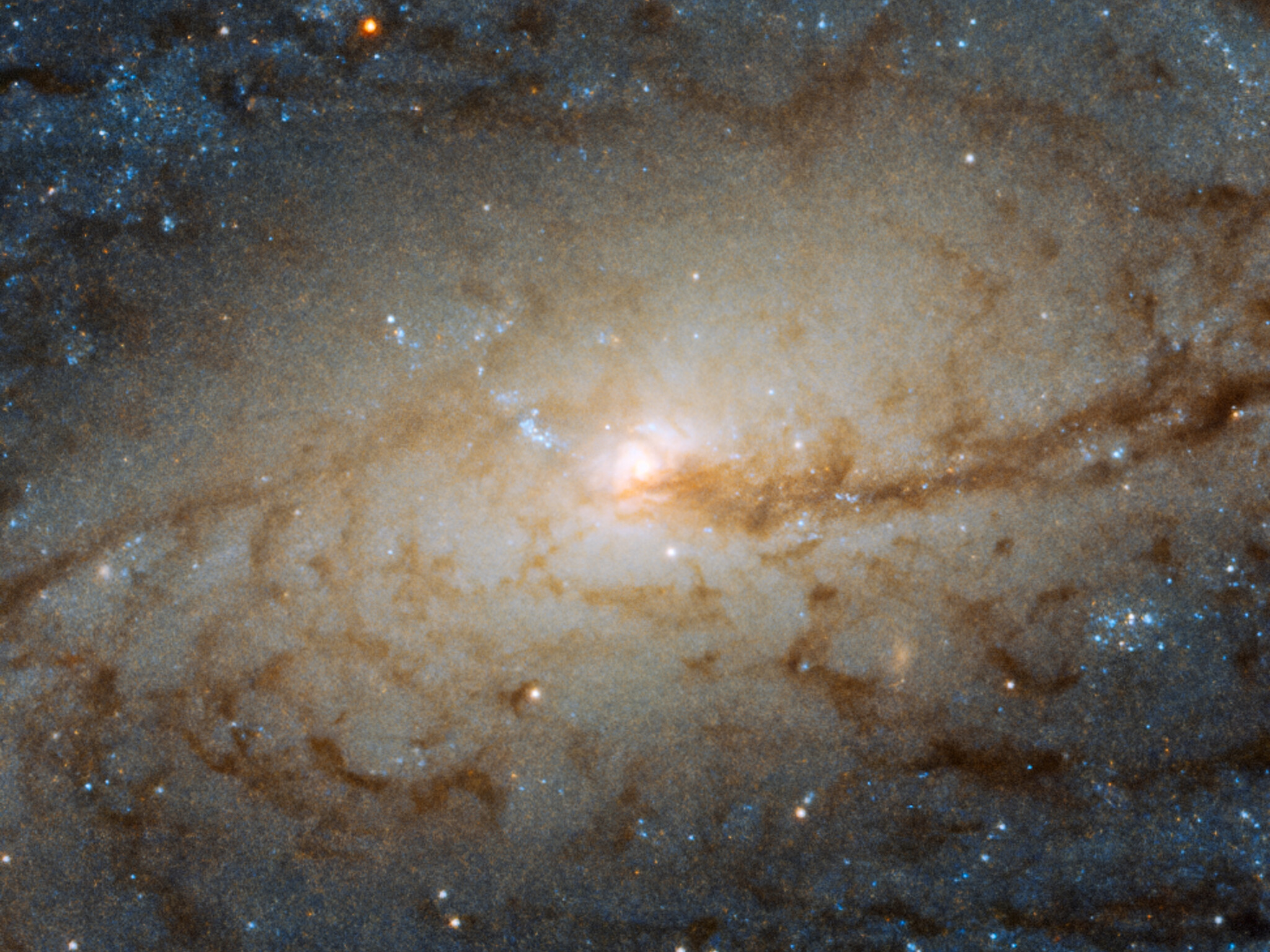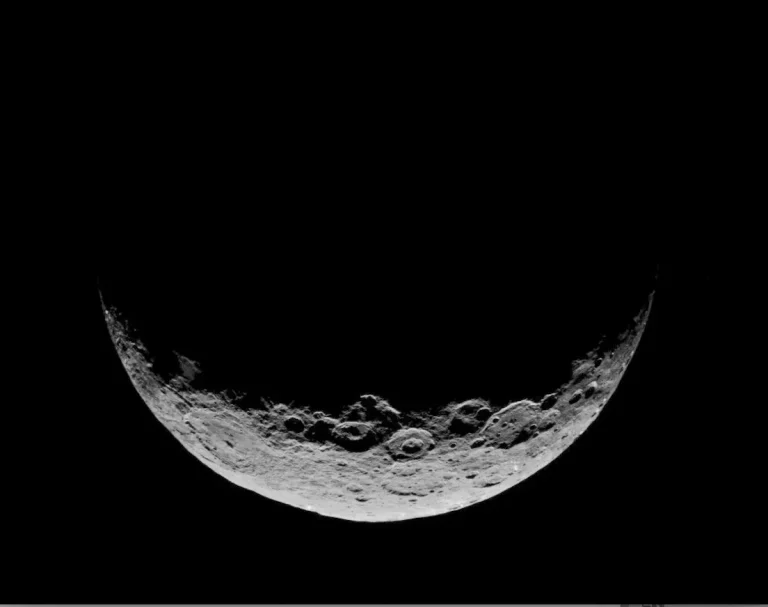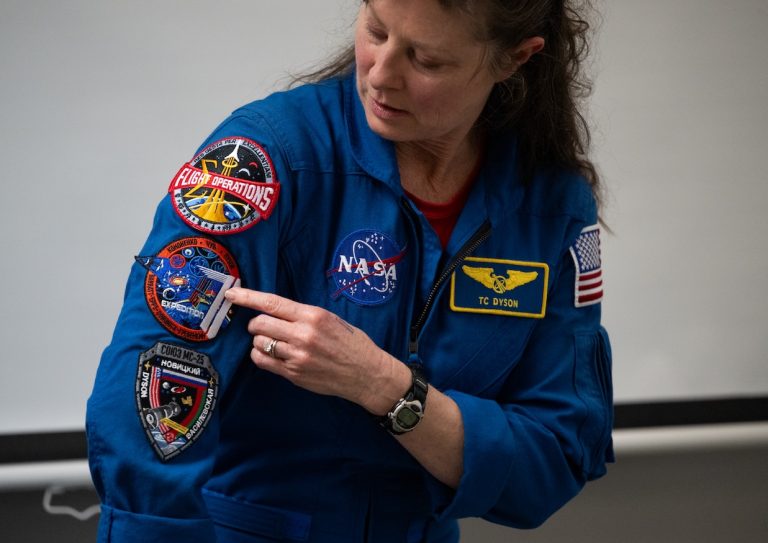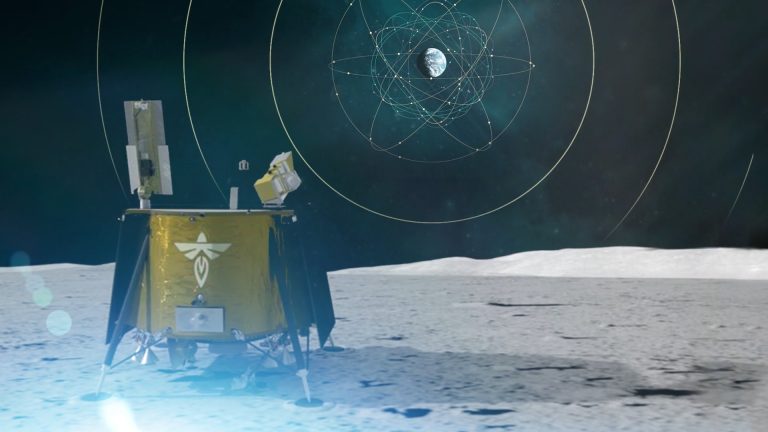The barred spiral galaxy NGC 3887, seen here as viewed by the Wide Field Camera 3 aboard the NASA/ESA Hubble Space Telescope, lies over 60 million light-years away from us in the southern constellation of Crater (the Cup). It was discovered on Dec. 31, 1785, by astronomer William Herschel.
Its orientation to us, while not exactly face-on, allows us to see NGC 3887’s spiral arms and central bulge in detail, making it an ideal target for studying a spiral galaxy’s winding arms and the stars within them.
The very existence of spiral arms was for a long time a problem for astronomers. The arms emanate from a spinning core and should therefore become wound up ever more tightly, causing them to eventually disappear after a (cosmologically) short amount of time. It was only in the 1960s that astronomers came up with the solution to this winding problem; rather than behaving like rigid structures, spiral arms are in fact areas of greater density in a galaxy’s disk, with dynamics similar to those of a traffic jam. The density of cars moving through a traffic jam increases at the center of the jam, where they move more slowly. Spiral arms function in a similar way; as gas and dust move through the density waves, they become compressed and linger before moving out of them again.
Text credit: ESA (European Space Agency)
Image credit: ESA/Hubble & NASA, P. Erwin et al.
NASA/ESA哈勃太空望远镜上的宽视野相机3号拍摄到的棒状螺旋星系NGC 3887位于陨石坑(杯状)南部,距我们6000万光年。它是在1785年12月31日被天文学家威廉·赫歇尔发现的。
它朝向我们,虽然不是完全面对面,但使我们能够详细看到NGC 3887的旋臂和中央凸起,使其成为研究旋涡星系的旋臂和其中的恒星的理想目标。
长期以来,螺旋臂的存在一直是天文学家的难题。这些旋臂从一个旋转的核心发出,因此应该会变得越来越紧,导致它们最终在(宇宙)短时间内消失。直到20世纪60年代,天文学家才想出了解决这个缠绕问题的办法。与刚性结构不同的是,螺旋臂实际上是星系圆盘中密度更大的区域,其动力学与交通堵塞时的情况类似。在交通堵塞的中心,汽车的密度增加,在那里他们移动得更慢。旋臂的作用与此类似;当气体和尘埃在密度波中移动,它们被压缩并停留,然后再次移出密度波。
文字来源:ESA(欧洲航天局)
图片来源:ESA/Hubble和NASA,P.Erwin等。







